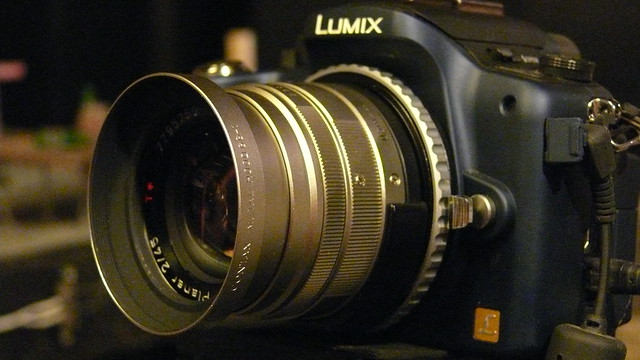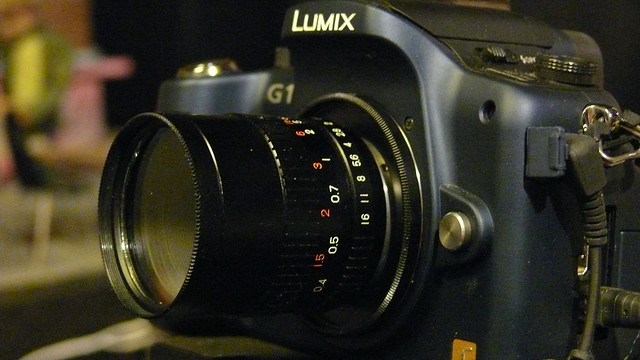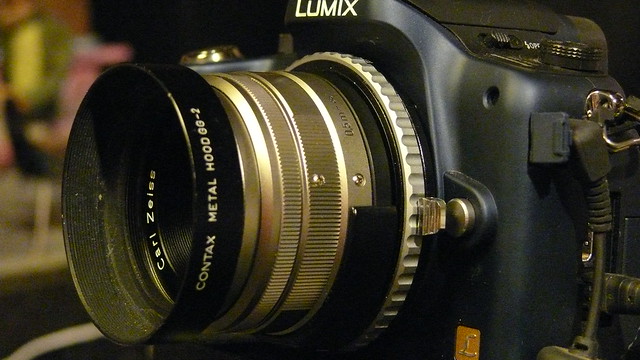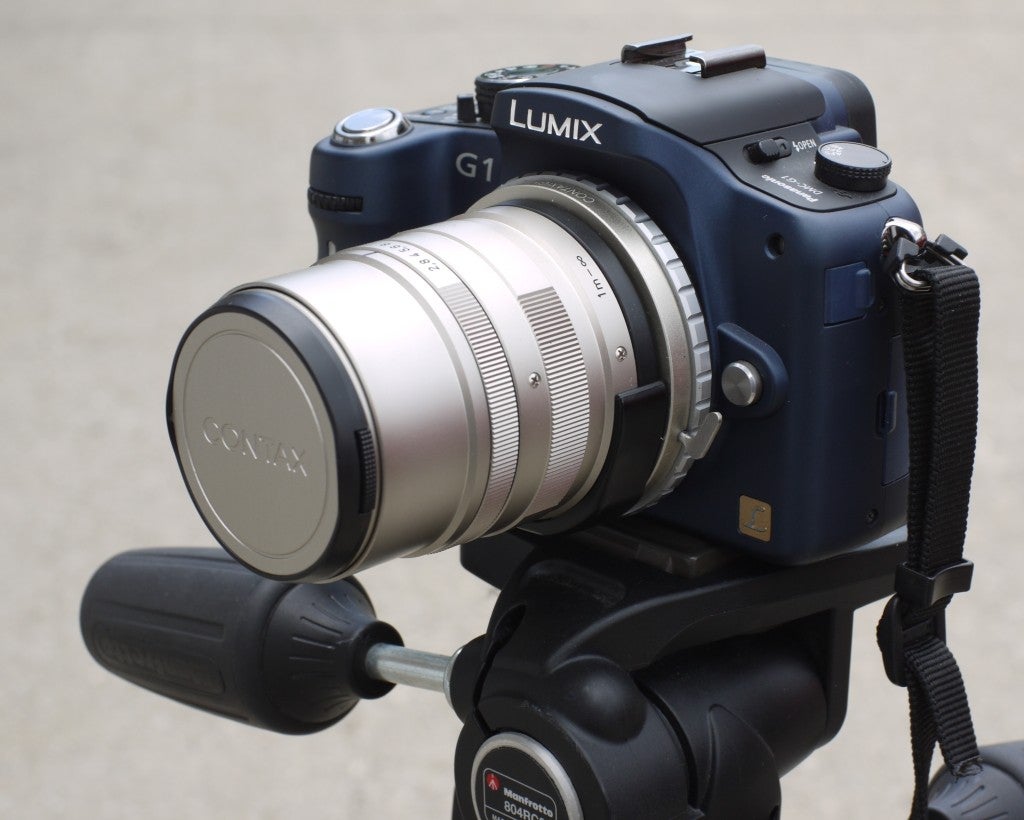I took a break from animating to put together this little video showing my legacy lenses - well, the ones that are currently in my possession anyway. Sorry if I got a little carried away with putting on and taking off every accessory on every lens, including the lens caps! The video slideshow is the fun way to look at my collection, but YouTube has seriously blurred things to the point where you can't make out details at all (unless you click through and switch to 1080p resolution on YouTube) - so I've also uploaded a few pics to Flickr where you can see each lens in far more detail than you'd probably ever care to:
Wollensak Cine Raptar 1" (25 mm) f2.5 Click the images to see them on Flickr
Click the images to see them on Flickr
Above and below are my 2 C-mount Cine lenses, made for 16 mm movie cameras. These could date as far back as somewhere in the 30's, and I suspect the little one above just might. I got it from eBay for a song, with an old Revere movie camera attached! The camera doesn't work, I'm using it strictly as a rear lens cap. In the video above you can see, this little sucker breaks down ridiculously far - there's a lens hood that comes off and then there's another piece that also comes off - not sure what that piece would be called. This one looks really crazy on my camera. Unfortunately it also vignettes pretty badly - so bad the photos are inside of black circles. It also doesn't have a focus ring. Not sure this one is worth using - glad I got it for $25!
Wollensak Cine Raptar 2" (50 mm) f2.5
This one is much more like it! Another C-mount lens made for 16 mm movie camera use, but this one doesn't vignette at all (a lot of the 25 mm and under ones do on m43 cameras). This is a hefty and beautifully worked hunk of steel. Has a very cinematic look because of the way it renders highlights in out-of-focus areas. In fact all the legacy lenses I've got ahold of are extremely cinematic. The front section is a hood that comes off.
This one is a CC TV lens, built for security camera, machine vision or closed-circuit TV use. Vignettes just ever-so-slightly right in the very corners in 16:9 mode, but when I crop to widescreen format that should disappear entirely. It actually looks rather pleasant, and generally can't be seen at all in dark shots (which I've been known to use now and then.. ), but if necessary I can crop it further and still end up with greater than HD resolution. This is the companion lens to my even wider 12.5 mm f1.4, which is currently in England being modified to eliminate the vignetting entirely (as detailed in my last post). These two have the lowest f-stop number at 1.4, meaning the aperture (iris) opens up nice and wide to let in lots of light - what's known as a fast lens. The faster a lens is, the shallower depth of field you can capture with it.
Carl Zeiss Contax-G 45 mm f2
And finally my two Contax-G lenses above and below. I described them well enough in the last post I don't feel the need to do it again. But I did feel bad for posting a web pic of somebody else's lens in that post, so thought I'd like to post pics of my own.
Carl Zeiss Contax-G 35 mm f2
Carl Zeiss Contax-G 45 mm f2
And finally my two Contax-G lenses above and below. I described them well enough in the last post I don't feel the need to do it again. But I did feel bad for posting a web pic of somebody else's lens in that post, so thought I'd like to post pics of my own.





